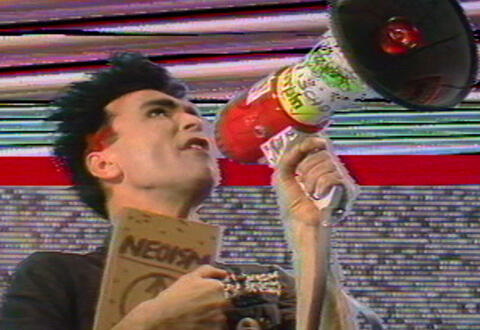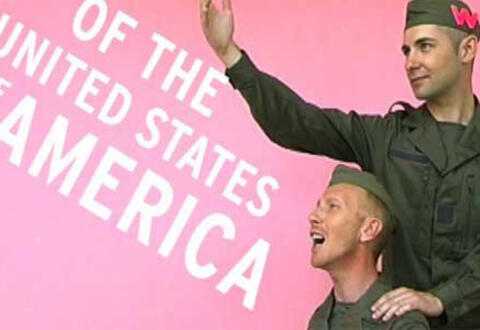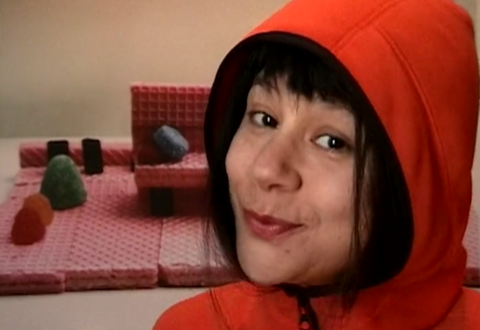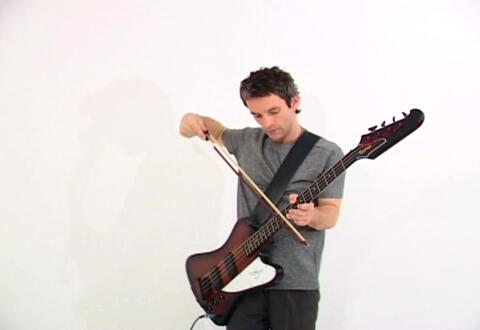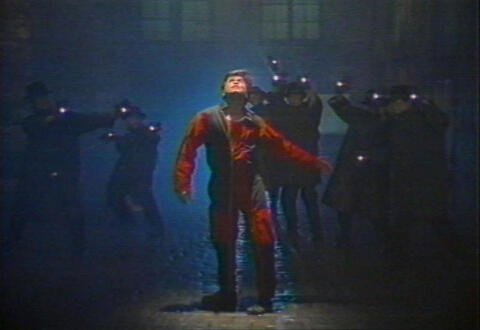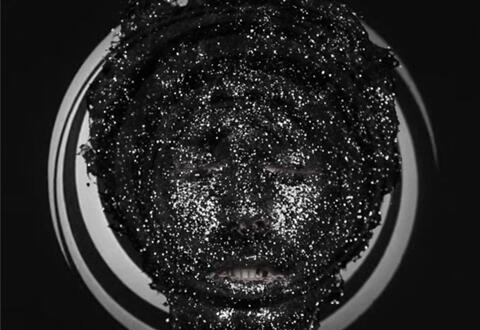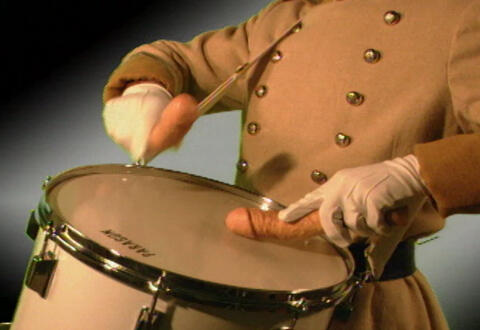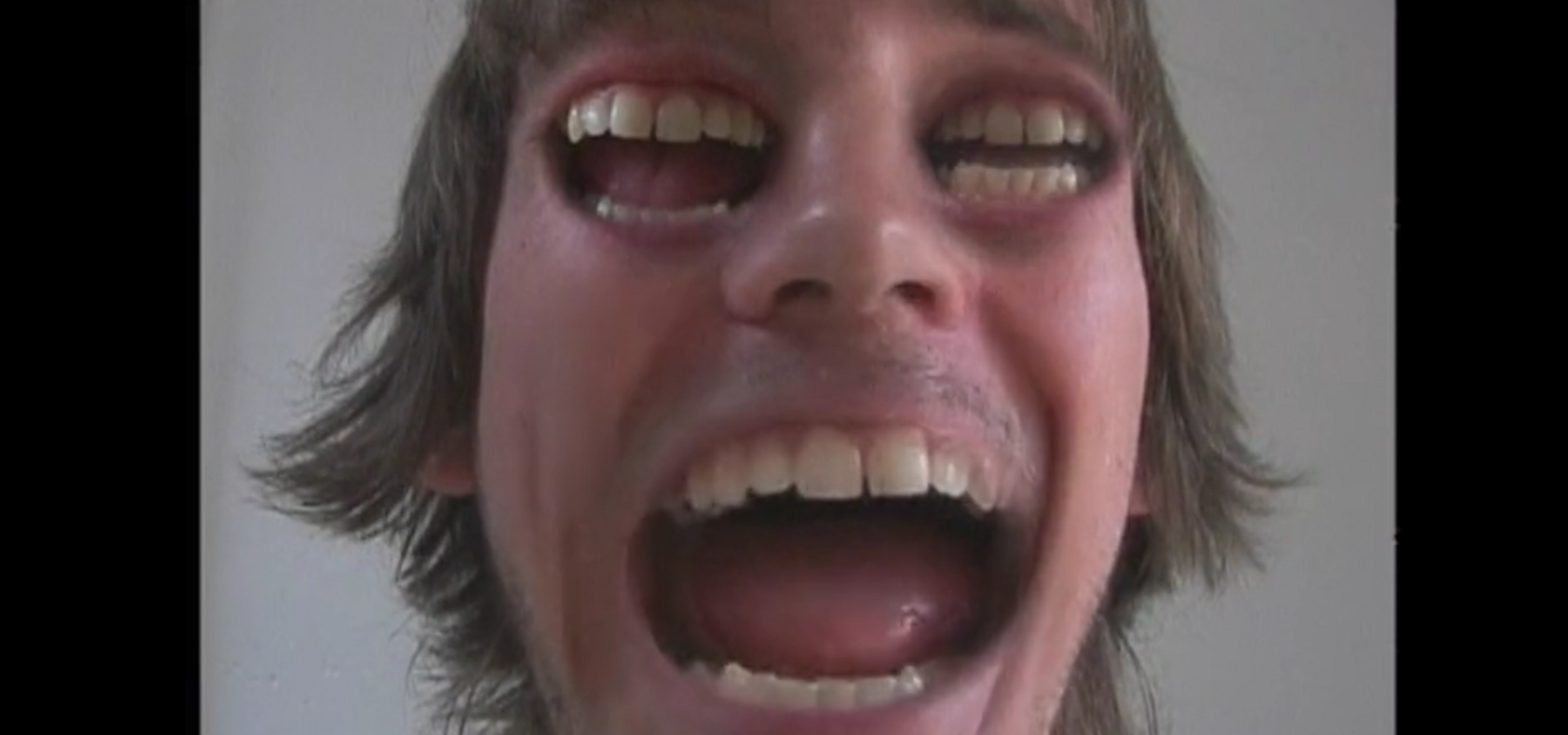
Video / clips
List of works in program
Video vs. video
By Karine Boulanger
The videos in this program centre around the act of singing: smash hits, true-false classics, original compositions. They refer to the complex relationship between video art and the ‘music video,’ this doppelgänger that imposed itself on the 1980s with the appearance of MTV (1981), MuchMusic (1984), and MusiquePlus (1986), and that would define an entire generation’s relationship to music. They brought glory to some and drove others to despair. For Nam June Paik, the direct connection and competition between video art and the music video is clear. In 1988 he said,
‘MTV's videoclips have already shown that there is great intimacy between sound and image. People are used to these electronic collages. If you compare them to the underground films of the '60s, you will find lots of common traits, such as abrupt cuts and unusual angles, among other characteristics. MTV is not the only approach to the issue of sound-and-image, but it is an interesting solution, which has contributed a lot to the development of a "visual music", and to video art.’ (1)
He went on, in 1995, to say,
‘I think MTV is great. The first two or three years of MTV were very good – it was a big cultural phenomenon. And we video-artists must take credit for that, because two key persons in MTV were from our lab. You know, their vice-president in technology was practically my engineer. We had what was called the Television Laboratory. And two key persons – the first program director and the first vice president in technology – came from our organization.’ (2)
Artists such as Jean Décarie or François Girard play with many music video codes: green screens, saturated colors, and rapid editing, for example. To our modern eyes, these videos seem deliciously dated and immediately evoke the 1980s. I Am Monty Cantsin, with its riot of almost aggressive effects, is a punk-revolutionary hymn by/for Monty Cantsin, alias Istvan Kantor. The video is built around a persona. Girard uses another strategy common to music video: a vague storyline that corresponds to the world of Michel Lemieux’s song, Fog Area. In a stylized airplane, our hero arrives in an industrial zone peopled with identical figures. Choreographed dancing ensues, the dancers facing us in ranks behind the singer.
Numerous visual artists have of course integrated music into their practice. This is true in Kantor’s case, as he regularly appears on stage, and is also true of Sylvie Laliberté, who launched her debut album in 2000, Dites-le avec des mots, following it up with Ça s’appelle la vie, and C’est toi mon lieu préféré sur terre. Laliberté uses the same true-false naivety in her music as in her videos or books, pointing out everyday truths and clichés in bizarre fashion. Take, for example, J’ai tout compris and its light, (literal) bonbon aesthetic that mocks the romantic revelation: ‘Je sais que la vitesse ne va pas si vite, et que les horizons sont à la maison’ (‘I know speed doesn’t go that fast and horizons are at home’).
Others take the opposite aesthetic approach, such as Nathalie Bujold, whose ‘small series of anti-MTV music videos’ (2008), comprise four videos in which incongruous motifs (insect, tulip, potatoes) create a simple and resolutely anti-spectacular counterpoint to pop songs (3). Here the music video is reduced to its simplest expression: a song and a series of images. In O.K. Gerard, which plays with rock star clichés, a guitarist is subjected to simple and repeated video effects against a white background. Someone who would usually be seen behind the singer is, in this case, the video’s primary and sole subject. The editing creates the music rather than supporting it. The performance always seems on the point of just beginning.
Some artists choose diversion. Pascal Lièvre uses songs as the primary material of a large part of his video work; he embraces, in a political and satirical way, the music video’s ‘mannerisms’: stylishness, exuberance, catchiness. The incongruous combination of the aesthetic, the pop melodies, and political or philosophical texts has a strong impact. L’éternel retour puts a text by Alain Badiou to music and Patriotic uses a speech by… George W. Bush.
An Illustrated History of Western Music breaks with the conventions of one song, one music video. Like the work of Lièvre, it is a wonderful hijacking of popular music in a voluntarily kitsch and queer world. The storylines and tunes keep coming as in a complex playlist. It is music video meets musical comedy, another great visual vehicle for popular music. Or vice versa.
While the cultural relevance of the music video has faded since the turn of the 21st century, at least in traditional media, video art is going strong. And it maintains a visceral connection to music and sound creation, to our great pleasure.
Notes:
1) Interview with Eduardo Kac in 1988 republished in: DIVA -- Digital & Video Art Fair (A Tribute to Nam June Paik) (Cologne, 2005), 8-9.
2) Nicholas Zurbrugg. ‘Nam June Paik: An Interview’, Visible Language 29:2 (1995): 122- 137.
3) These titles are unfortunately not shown here for copyright reasons.
Image: Antonin De Bemels, Mouthface, 2007






